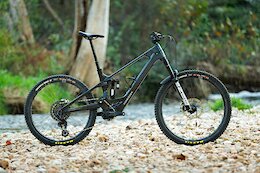Providing your teams with relevant, real-time analysis enables them to make more informed and agile business decisions. But we often hear from customers that scattered information and siloed data prevent their employees from getting the rapid insights they need.
That’s why so many enterprises are looking to revolutionize data management by building a business data fabric. This is a data management architecture that focuses on delivering an integrated, semantically-rich data layer over underlying data landscapes to provide seamless and scalable access to data without duplication. But when it comes to building a business data fabric, what is the best approach?
Putting SAP Datasphere to the test
SAP Datasphere, a comprehensive data service built on SAP Business Technology Platform, is the foundation for a business data fabric. It enables organizations to deliver meaningful data to every data consumer—with business context and logic intact. It provides capabilities from data ingestion through self-service data access across SAP and non-SAP data.
In its Data Fabric Field Test: SAP vs. DIY, GigaOm measured the ease of use, time, effort, and total cost of deploying SAP Datasphere as compared to a do-it-yourself (DIY) approach to building a data fabric with a blend of other applications. The DIY implementation path included solutions for data warehousing and data integration, along with a data catalog and data lake. The results are very compelling:
Ease of use
GigaOm evaluated the ease of use when it comes to carrying out a variety of data management tasks. It found that, compared to the DIY approach, SAP Datasphere was on average 23.1% easier to use, with data modeling 72.4% easier and data security 78.6% easier.
Time
The report found that deploying SAP Datasphere took significantly less time than building the DIY implementation path. In fact, the initial build timeline for SAP Datasphere was about 2.5 times shorter.
Effort
To quantify effort, GigaOm evaluated the amount of effort required for enterprises to complete the three main stages of establishing a data fabric, which they defined as:
Initial build/migrationContinuous integration and delivery (CI/CD) of new features and enhancementsAdministration (including maintenance and user support)
For all three stages, the report found that deploying SAP Datasphere requires less effort than the DIY approach. And for the CI/CD and maintenance stages, GigaOm found that it takes about a third to a half of the headcount to run SAP Datasphere as compared to the DIY implementation path.
Total cost
Across all data fabric sizes, the infrastructure costs to support SAP Datasphere were about 69% lower than those of the DIY approach. The report also found that SAP Datasphere provided a savings of 63% on initial build costs, 53% on CI/CD costs, and 41% on administration costs. What’s more, the solution reduced total cost of ownership by 138% over a three-year period.
Find out more
In my next two blogs, I’ll highlight the ROI and deployment best practices for SAP Datasphere. In the meantime, read the GigaOm Data Fabric Field Test: SAP vs. DIY study to learn more.
Providing your teams with relevant, real-time analysis enables them to make more informed and agile business decisions. But we often hear from customers that scattered information and siloed data prevent their employees from getting the rapid insights they need.That’s why so many enterprises are looking to revolutionize data management by building a business data fabric. This is a data management architecture that focuses on delivering an integrated, semantically-rich data layer over underlying data landscapes to provide seamless and scalable access to data without duplication. But when it comes to building a business data fabric, what is the best approach?Putting SAP Datasphere to the testSAP Datasphere, a comprehensive data service built on SAP Business Technology Platform, is the foundation for a business data fabric. It enables organizations to deliver meaningful data to every data consumer—with business context and logic intact. It provides capabilities from data ingestion through self-service data access across SAP and non-SAP data. In its Data Fabric Field Test: SAP vs. DIY, GigaOm measured the ease of use, time, effort, and total cost of deploying SAP Datasphere as compared to a do-it-yourself (DIY) approach to building a data fabric with a blend of other applications. The DIY implementation path included solutions for data warehousing and data integration, along with a data catalog and data lake. The results are very compelling: Ease of useGigaOm evaluated the ease of use when it comes to carrying out a variety of data management tasks. It found that, compared to the DIY approach, SAP Datasphere was on average 23.1% easier to use, with data modeling 72.4% easier and data security 78.6% easier.TimeThe report found that deploying SAP Datasphere took significantly less time than building the DIY implementation path. In fact, the initial build timeline for SAP Datasphere was about 2.5 times shorter.EffortTo quantify effort, GigaOm evaluated the amount of effort required for enterprises to complete the three main stages of establishing a data fabric, which they defined as:Initial build/migrationContinuous integration and delivery (CI/CD) of new features and enhancementsAdministration (including maintenance and user support)For all three stages, the report found that deploying SAP Datasphere requires less effort than the DIY approach. And for the CI/CD and maintenance stages, GigaOm found that it takes about a third to a half of the headcount to run SAP Datasphere as compared to the DIY implementation path.Total costAcross all data fabric sizes, the infrastructure costs to support SAP Datasphere were about 69% lower than those of the DIY approach. The report also found that SAP Datasphere provided a savings of 63% on initial build costs, 53% on CI/CD costs, and 41% on administration costs. What’s more, the solution reduced total cost of ownership by 138% over a three-year period.Find out moreIn my next two blogs, I’ll highlight the ROI and deployment best practices for SAP Datasphere. In the meantime, read the GigaOm Data Fabric Field Test: SAP vs. DIY study to learn more. Read More Technology Blogs by SAP articles
#SAP
#SAPTechnologyblog












